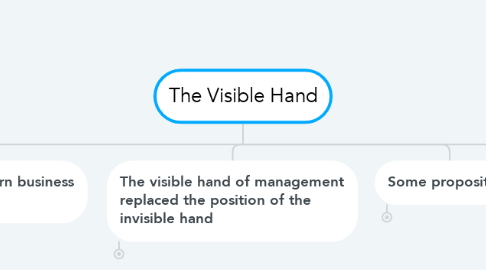The Visible Hand
by Elia Morin


1. The visible hand of management replaced the position of the invisible hand
1.1. When? beginning of 19th century
1.2. why? look at propositions
2. Definition of modern business enterprise
2.1. It contains many distinct operating units
2.2. It is managed by a hierarchy of salaried executives
2.3. Modern enterprise operate in different locations, often carrying on different types of economic activities. The activities of these units and the transactions between them thus become internalized. They become monitored and coordinated by salaried employees rather than market mechanisms.
3. Some proposition
3.1. Modern multiunit business enterprise replaced small traditional enterprise when administrative coordination permitted greater productivity, lower costs and higher profits than the coordination by market mechanisms
3.1.1. By routinising the transactions between units, the costs of these transactions were lowered.
3.1.2. By linking the administration of producing units with buying and distributing units, costs for information on markets and sources of supply were reduced.
3.1.3. The internalisation of many units permitted the flow of goods from one unit to another to be administratively coordinated.
3.1.4. More effective scheduling of flows achieved a more intensive use of facilities and personnel employed in the processes of production and distribution and so increased productivity and reduced costs.
3.1.5. Amministrative coordination provided a more certain cash flow and more rapid payment for services rendered.
